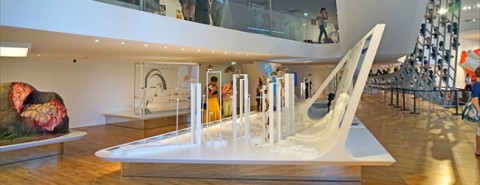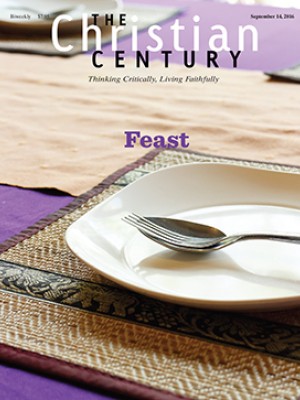
In 1938, on the cusp of World War II, the Museum of Mankind (Musée de l’Homme) opened in Paris, across the Seine River from the Eiffel Tower. It would never have come to fruition without the efforts of Paul Rivet, an ethnologist working alongside Marcel Mauss and Émile Durkheim between the wars, who was committed to antifascist cultural and political work. In contrast to the Nazi ideology sweeping Germany at the time, Rivet wanted the museum to portray “man as an indivisible whole in space and time.”
At the beginning of the 21st century, the Musée de l’Homme underwent a massive renovation, spanning several years, and reopened in the fall of 2015. The new layout, in the same architectural shell at the Trocadéro, is a beautiful, uncluttered space. The exhibition rooms and exhibit cases display archaeological discoveries, cultural curiosities, scientific data, and artistic takes on human existence. All of them speak to the questions set up by the museum coordinators: Who are we? Where do we come from? Where are we headed?
Read our latest issue or browse back issues.
Answers are offered as visitors move past exhibits portraying how food production, social customs, and the arts evolved along with hominid skeletal and muscular adaptations, eventually leading to Homo sapiens. Embedded in the overarching narrative are objects from religious traditions: symbols, masks, icons, and amulets.
The museum places these objects alongside one another to invite comparison and contrast. One cluster of objects includes a wooden West African power figure, a bronze Shiva Nataraja from South Asia, an earth-touching Buddha, and a Christian crucifix. Another cluster displays the “transformation” of Senegalese amulets, which are made by modifying and decorating water bottles so that they can be used as conduits of spiritual power.
Hundreds of millions of people across the world visit museums each year, hoping to have an experience with customs and rituals that are not their own. This makes museums key centers for religious education, for confronting “otherness,” and even for interreligious encounters.
Some might argue that museums turn religion into something static, pinned in place like a butterfly. Others point to the Creation Museum in Kentucky to demonstrate that museums can create a skewed understanding of religion (and science). But museums can provide a neutral, public space for reflecting on the role of religion in human experiences. Many people don’t regularly interact with those of differing religious traditions, much less visit their mosques, temples, churches, and synagogues. They rarely have the chance to see, smell, taste, and touch the elements of other religious practices.
More than simply offering bookish information, museum exhibits provide a sensory engagement with objects. The exhibits operate like a 4-D film, bringing viewers close to religious experience by incorporating smell and touch as well as sight and sound. Many exhibits trigger not just an intellectual collection of facts about religions and cultures, but emotional responses as well.
The Musée de l’Homme contains is a white oblong table with a map of the world imprinted on a Plexiglas top. Large arrows begin in Southeast Asia and fan out across the continents, mapping the history of riceways—the paths that rice cultivation and cuisine have taken across the globe, transforming human cultures along the way. Around the table are pictures of how rice is served in different places, and the visitor can push buttons to release the scents of rice in various dishes. Visitors may call it all “rice,” but our nose identifies differences. Such multisensory displays provoke visitors to think and feel their way through intercultural and interreligious encounters.
The press kit released at the reopening of the Musée de l’Homme says that its objects are displayed to “elicit contemplation and stir emotion.” Through sound, sight, touch, and even smell, the museum presents the worlds of religious life. By seeing humankind as what Rivet called “an indivisible whole in space and time,” we can learn about who we are as a species.
A version of this article appears in the September 14 print edition under the title “Displaying the human story.”





